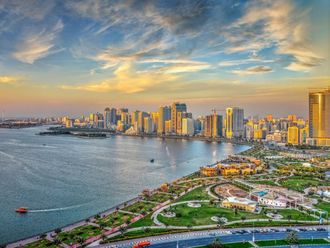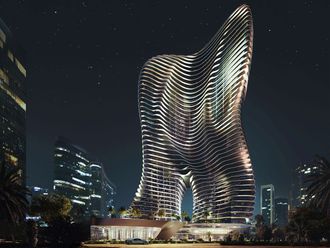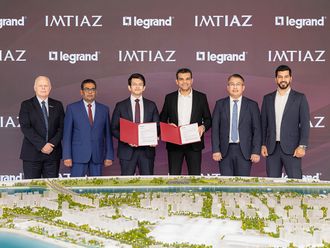It was over the last decade that the idea of building ‘green' sprouted globally. Gradually it turned into one of those trends set up to support marketing of related fields of construction activity.
Today, the term ‘green' is certainly abused and misunderstood by most in the engineering space.
All planetary living systems are the only designs we know of that are triumphant in their sustainability because they relate with the environment in holistic and reductive processes.
Many of the current green building rating systems like LEED (Leadership in Energy and Environmental Design) are structured to endorse solutions that are — in majority — additive and encourage consumption over conservation. This is because the rating systems are initially conceived to have a set of sections for sustainability, and are then packed with technologies and products to achieve it.
So much so, architects now depend much on these intelligent service systems to make up for any neglect in the basic building design.
Unfortunate trend
It is unfortunate that rating systems such as LEED have converted architecture into an accounting exercise. This has completely digressed from what could have been a healthy exercise in coming out with good architecture.
We are allowing these statistical procedures to dominate our logical thinking and creativity. The potential benefits of solely achieving a certification should not be the motive of a design process.
Why are a majority of the LEED credits weighted equally when it is clear that some points have more environmental benefits than others? "Although installing an efficient HVAC [heating, ventilating and air-conditioning] system would amount to saving a huge amount of energy and add environmental value on a massive scale, according to the rating system it still equals the idea of having bicycle racks within a campus," said an architect.
In my view, the solution here is to make a careful study of all the critical credits that add superior environmental value and make them mandatory. Then, the playing of points can be done by professionals within the feeble credits.
It is a fact that the development of green/sustainable buildings will initially cost more than a conventional one. We also have to add costs associated with procedures for LEED certification.
I wonder why consultants break their heads making up fake reports and statistics to show clients otherwise. The hidden costs will show up as the project marches towards completion and will cause havoc for the clients. Let us be brave enough to acknowledge they cost more but are definitely worth it.
Somewhere along the line, organisations such as USGBC (US Green Building Council) have realised it could profit from the LEED system. It has advertised LEED globally as compared with other rating systems such as Greenstar and UK's Breeam.
The USGBC charges high fees for commissioning and for becoming a Leed accredited professional.
Additionally, its accreditation is being converted into an ‘elite' profession and gradually threatening the significance of trained professionals in the architectural and engineering green arena. I am forced to question the significance of paying for and passing this test as all Leed accredited professionals go back to referring the handbooks while commissioning all aspects of a project.
Regular inspections help
Instead, the procedures should be more involving and subjective. Points should be granted for innovative approaches that are not included in the Leed handbook. Instead of LEED's accredited professionals judging buildings solely through paper and e-media submissions, regular visits to analyse project sites and inspections of materials/products should be conducted. If clients and consultants spend a lot of money and effort analysing a project through mere paperwork, it does not justify the whole system at all.
The world needs green buildings a lot more than green buildings need Leed or a Breaam certification. If certifications continue to cost too much money, time and effort, we will not stop building green projects, we will just stop certifying them.
The writer is an architect based in Doha, Qatar.












